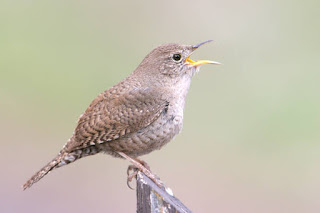I was just sitting here thinking about how people take their "common" birds for granted. This is perhaps partly due to the fact, that we just don't know some of their most interesting behaviours! This article will highlight 5 of the commonly occurring North American bird species, that exhibit some truly bizarre behaviors! Maybe after reading this article, you will have a new found appreciation, or perhaps even disdain for these species. Either way you look at it all of these adaptations are extremely remarkable and fascinating!
1) American Wigeons are Jerks!
Most people are familiar with the thievery exhibited in gulls and other seabirds. Anyone who has taken their kids to feed the ducks, or spent some time sea watching will have noted how aggressive Gulls can be as they bully other birds and steal their food. But has anyone ever noticed American Wigeon stealing food from other ducks and waterfowl! Birds that steal food from other birds are known as kleptoparasites. As I mentioned, this behaviour is well documented in various seabirds from Frigatebirds to Gulls and Jaegers, but the American Wigeon often flies under the radar in this regard! (excuse the pun there!).
Note how the Wigeon calmly just swims around the Coot, pretending to be friendly and then as soon as the Coot comes up with some food, swoops in and steals it!
2) Northern Fulmars are Bulimic Olympians!
Northern Fulmars get the award for most creative and grossest defence mechanism, for their habit of projectile vomiting (very accurately I might add) at would-be attackers. When you think about it, this really is quite an ingenious way, for a seemingly defenceless bird to level the playing field against potential predators. When feeling threatened Fulmars regurgitate their very foul smelling and acidic stomach contents, in well aimed bursts. This could be quite harmful to avian predators since it can matte their feathers destroying their water-proofing and insulating properties. Note below how even this very young chick is capable of defending itself using this technique!
Northern Fulmar chick exhibiting it's vomiting prowess
3) Turkey Vultures Pee Themselves on Purpose!
Considering it's unsightly looks and already questionable habit of feasting on decaying flesh, it shouldn't be too surprising that the Turkey Vulture has a few more disturbing habits in it's repertoire. As a means of cooling themselves in extremely hot and humid temperatures, Turkey Vultures (all New World Vultures and Wood Storks actually!) practice what is called urohydrosis. The Vultures will actually pee on their legs their legs and as the urine evaporates it will assist in helping the Vultures cool off. It's a similar principle to the way we humans sweat and the evaporating sweat assists in regulating our body temperature. Someone should tell them wetting their legs by standing in water will do the same thing ;) Though, if you can't find water, then pee it is!
 |
| Turkey Vulture |
4) Red-breasted Nuthatches are Home Security Specialists
Now this is something we can surely relate to! Anyone who has been the victim of a home invasion surely knows what a frightening and angering experience that can be. In medieval times is seems the moat was a popular means of defence.However this practice seems to have fallen out of favour- I guess there would just be too many liability concerns, and then you have the upkeep issues. No one even likes raking up leaves, or cleaning the gutter, imagine having to clean the moat! So in modern times to protect ourselves from home invaders we lock our doors, purchase expensive security systems etc. Well it seems Red-breasted Nuthatches kind of took that moat idea and gave it their own personal spin.
It would seem that Nuthatches have a particular disdain for Centipedes and other potential creepy crawly predators, so they've taken that moat idea and made it their own. Red-breasted Nuthatches put a thick rim of tree sap around the entrance to the nesting cavities, to act as a deterrent to predators! To prevent themselves from being stuck in their own trap they fly directly into their cavities rather than perching on the edge like many other cavity nesting species do. Pretty amazing!
 |
| Note the thick ring of sap around the cavity entrance Photo: Slugyard Blog |
5) House Wren are Even Bigger Jerks Than American Wigeons!
House Wrens, while not native to Newfoundland and in fact are quite rare, are a familiar bird to many due to to their tendency to nest in peoples gardens and take readily to bird houses. This diminutive bird, with it's explosive, bubbly song is a welcomed visitor to many yards and people delight in watching them go about their business. But, did you know that House Wrens have a dark side?
As it turns out House Wren are interspecifically antisocial. Basically, what this means is they don't get along well with other bird species and don't appreciate other species nesting within their territory. So what so they do about it? Well, these little Wrens have the nasty habit of sneaking into the nests of other birds and poking a hole in their eggs! This of course, leads to the death of the embryos inside and complete nest failure. Not cool House Wren, not cool!
 |
| Look how innocent it looks! |
I am thrilled to be able to provide educational and entertaining content. However, these articles are very time consuming to write. If possible please consider subscribing to the blog with a very small monthly fee via the subscribe button. This will help to cover costs of website maintenance and all the other expenses that go into producing the content. Whether you subscribe or not you will still have access to all the content, the small subscription fee is just a means of showing your support. Thank you!





No comments:
Post a Comment